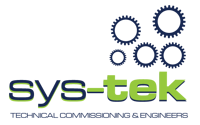The Real Cost Savings and Benefits of Retro-Commissioning
Jun 12, 2013
Retro-commissioning is the process of monitoring, adjusting and troubleshooting electrical, control and mechanical systems in buildings already in use to enhance their energy performance. It includes a whole-building scope of testing and inspection regarding building envelope, life-safety systems, plumbing, lighting, electrical and HVAC. Retro-commissioning also includes checks for complete documentation and ensuring that operators have been trained in the maintenance of long-term performance. Most importantly, it provides substantial financial benefits by identifying and implementing low-cost maintenance and operation improvements.
Benefits of Retro-Commissioning
Retro-commissioning brings about different benefits for businesses that result in financial savings and increased comfort levels. Some of these include:
- Returning equipment to an optimal operation state.
- Extending the life of equipment service.
- Reducing repair and maintenance costs.
- Reducing complaints and enhancing indoor air quality and occupant comfort.
- Optimizing chiller operations and that of similar types of equipment.
- Correcting and adjusting equipment schedules of operation.
Cost vs. Savings of Retro-commissioning
Research on retro-commissioning reveals that the typical retro-commissioning project cost is $0.30/ft^2, giving 16% in energy savings with a payback of 1-2 years. Typical energy savings from retro-commissioning range between 5-20%. Retro-commissioning programs provide annual financial savings covering up to 75% of the whole service cost, providing a rapid return on investment often within two to three years.
Candidates for Retro-commissioning
Retro-commissioning larger buildings is more cost-effective than smaller ones. There is a large correlation between energy savings and building size. Retro-commissioning is particularly well suited for buildings 50,000 square feet and above. For example, while the cost of optimizing an air handler or large rooftop unit is proportionally equal to that of a smaller one, the net savings will be greater for the bigger system due to economies of scale. This results in more energy savings, and proportionally less expenses and billable hours to the retro-commissioning providers.
Other great candidates for retro-commissioning are complex facilities with high air changes and that use large amounts of energy — for instance: data centers, hospitals, manufacturing facilities and laboratories. In general, a good rule is, the more complex the building, the more the savings. Such buildings often have automation systems that are developed and serviced on complex digital controls rather than compressed air or pneumatic controls that lack programming capabilities. A good retro-commissioning process ensures that the staff for such centers is well trained and knows how to set up trending data, making the retro-commissioning process cost effective and able to provide lasting improvement.
After a period of time, all commercial and industrial buildings will undergo changes in operations that hinder their optimal energy performance. Energy systems are very interactive and require proper integration because small problems can result in huge performance consequences and waste. Retro-commissioning ensures that these systems and operations are integrated so that they perform efficiently and effectively together, thereby meeting operating expectations and requirements.






